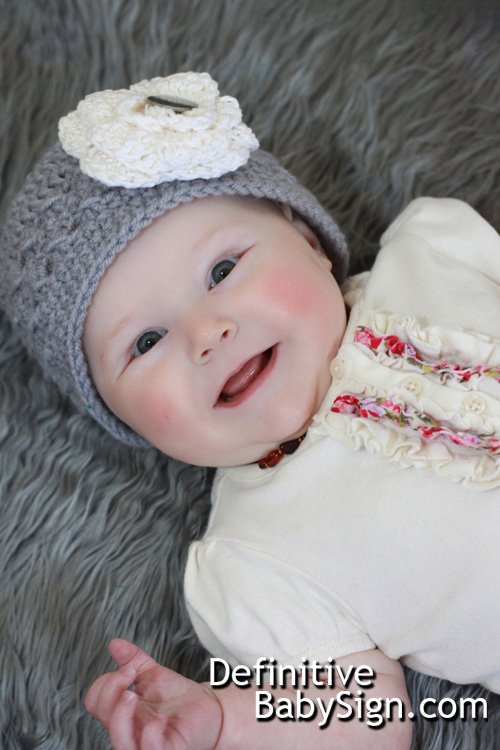 The window to teach sign begins after about 10 months of age. You can start at 9 months and even earlier, but you might wear yourself out before you get the feedback you need from your baby to get excited about it. After 10 months the full benefits of signing become greater until they peak at about 18 months or so. From there, spoken language will begin to take over little by little.
The window to teach sign begins after about 10 months of age. You can start at 9 months and even earlier, but you might wear yourself out before you get the feedback you need from your baby to get excited about it. After 10 months the full benefits of signing become greater until they peak at about 18 months or so. From there, spoken language will begin to take over little by little.
If you teach signs, you can expect that your signing baby will have a spoken vocabulary that grows at a great magnitude making signing difficult to maintain. Once your baby starts to talk, they will be tempted to drop some of the signs they used to sign proficiently. This shouldn’t be a concern, but rather be a time for celebration. Keep in mind as you sign, that the goal is to move babies toward talking and to make your life my simpler and more manageable.
As you sign remember that every child develops at their own rate. And while you can introduce signs from birth, it will probably take at least six months until your baby signs back. As your baby ages, you should include more complex and abstract signs. By age 2, your baby will begin to speak and at around the same time, will start combining signs into signed sentences.
To know when a baby is ready to sign, just watch for visual cues. When you say “milk” does your baby look toward it? If you clap your hands, will your baby copy? Does your baby wave their hand for bye-bye? I talk more about cues that your baby is ready to sign in the online baby signing course.
Whatever you do, just allow signing to evolve at it’s own pace. It should not involve specific goals or timelines. Your baby is going to choose their own pace and there’s not a whole lot you can do about it. When you start, just be consistent and when you introduce a sign, keep signing it as much as possible.
